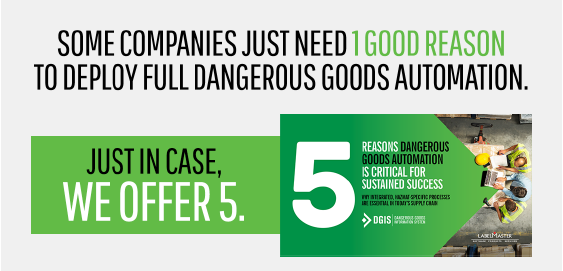

Week of August 22nd, 2022
Linking supply chain news with dangerous goods compliance
Mergers & Acquisitions (M&A) activity continues to be hot throughout retail, manufacturing, logistics and other industries. This can have a tremendous impact on how businesses manage their supply chains.
Let’s examine some recent industry news.
SUPPLY CHAIN NEWS
- ABB Set to Acquire Siemens Low Voltage NEMA Motor Business: The move expands ABB’s low-voltage NEMA motor portfolio and establishes manufacturing operations in Mexico.
- Nikola Acquires Romeo Power to Develop and Produce its Own EV Batteries In-house: Commercial EV manufacturer Nikola Corporation has agreed to acquire EV battery developer Romeo Power Inc. and will begin engineering its own EV packs in-house.
- UPS Acquires Multi-National Healthcare Logistics Company Bomi: The purchase brings under the UPS Healthcare umbrella several temperature-controlled facilities in 14 countries situated throughout Europe and Latin America.
- GEODIS to Acquire Need It Now Delivers: GEODIS announced plans to acquire Need It Now Delivers, enabling GEODIS to significantly increase its presence in U.S. contract logistics and last-mile delivery.
- Reducing M&A Risk with Better Data: Mergers and acquisitions are inherently complex, but a connected digital ecosystem paves a clearer path to a successful acquisition.
- Lessons For Long-Term M&A Integration Success: Creating the right environment for M&A success requires stakeholders to invest both in near-term milestones and a long-term strategy.
OUR PERSPECTIVE
- M&A activity brings compliance challenges. Ensuring compliance across the supply chain becomes even more difficult following M&A activity as companies need to make sure processes are correct across all new locations and harmonize their processes. This is especially true if the acquisition expands an organization’s reach into new industries, product lines or geographic regions.
- Understand new compliance requirements. DG shipping regulations are complex, ever-changing and can vary by country, transportation mode, item type and more. Businesses can’t assume that the goods shipped by the acquired company can follow the same shipping processes that they’ve traditionally used. Understand what DG now exists within the supply chain and take the proper steps to ensure they are being packed, stored and transported properly.
- Automate and standardize processes. Automating and standardizing DG shipping processes not only enables smooth and efficient operations but supports supply chain resilience and business continuity — across locations, departments, business units and subsidiaries. Utilizing DG-specific software will allow organizations to integrate compliance more effectively and efficiently into all every ERP, TMS and WMS being used.
To learn more about Dangerous Goods software or how to establish a safer, more compliant supply chain, visit https://www.labelmaster.com.
Have questions about Dangerous Goods transport? Call the Labelmaster Regulatory Hotline at 1.800.621.5808.
Automation is the key to handling today’s supply chain challenges. But without true Dangerous Goods automation, you may be operating at a competitive disadvantage.
Integrating Labelmaster’s DGIS with your existing TMS, ERP, WMS or OMS platforms puts Dangerous Goods information in the same window as all your other shipping information. Hazmat shipments become as simple as non-regulated shipments—a seamless part of your normal workflows.
Our new eBook explains how integrating DGIS with your existing automation platforms can help your organization sustain success in today’s supply chain.




